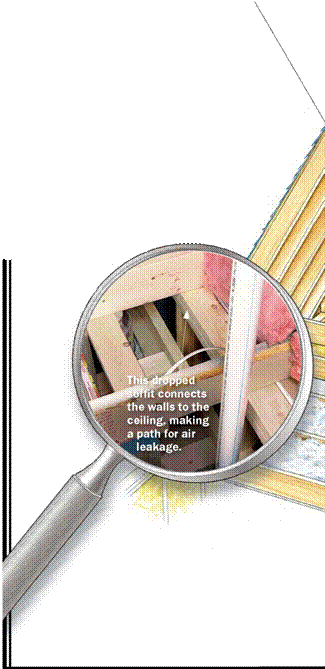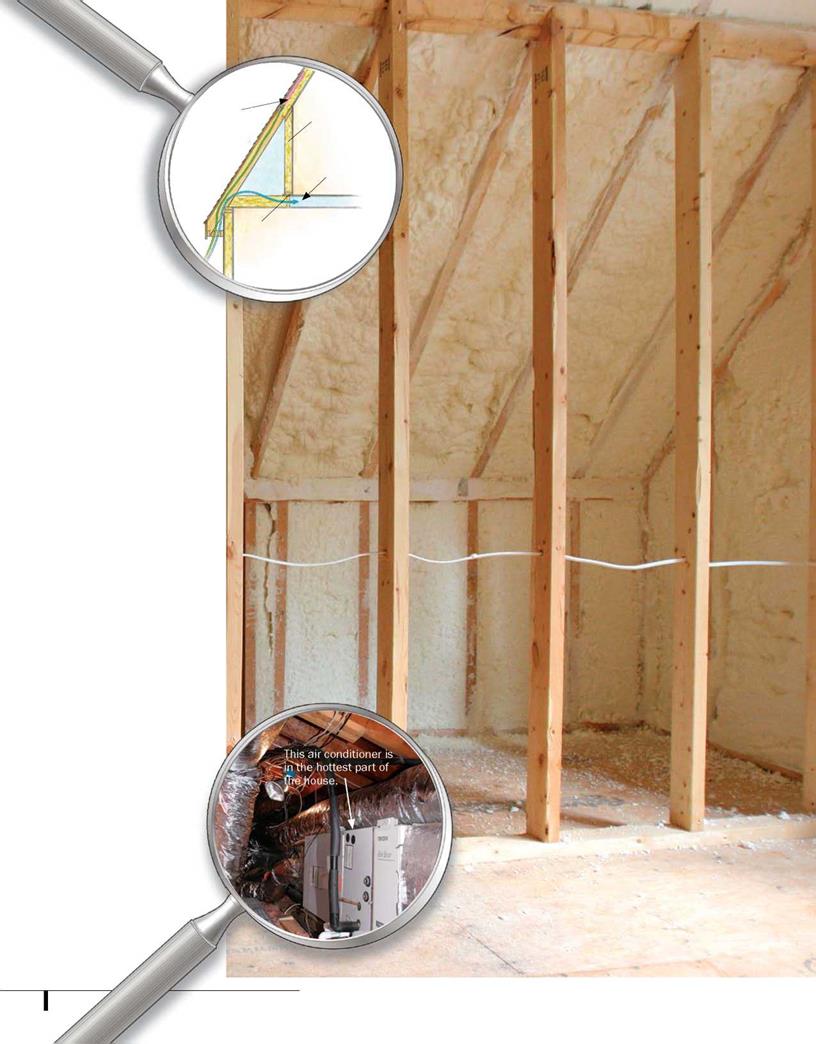With Insulation, a Little Laziness Goes a Long Way
People naturally think that if you cover 98% of a surface with insulation, you’ll get 98% of the performance. This thinking is horribly wrong. Gaps and missing insulation create a hugely disproportionate performance penalty. If you install R-38 batts in an attic but leave 0.5% of the surface area uncovered, you end up with R-32 (16% reduction in R-value). Leave 2% uncovered, and you drop to R-22 (42% reduction). So with 98% coverage, you get 58% of the performance.
If you run across information saying it’s not cost-effective to add insulation, it probably assumes the initial R-value is what you say it is. In all likelihood, the R-value is less than half what you think, and the upgrade is worth much more—provided it’s done right.
TWO BIG HOLES CAN COST YOU MONEY.

 Directly above a bathroom, this attic view reveals a dropped soffit and a large plumbing chase for the vent stack. The soffit connects the attic with the walls; the plumbing chase is a direct hole running through the house. These two leaks are like leaving a window open. The Fix: Cover the open framing with rigid foam or plywood, and seal small openings with spray foam. Finally, cover them with insulation. Loose-fill insulation such as cellulose is cheap and easy to install.
Directly above a bathroom, this attic view reveals a dropped soffit and a large plumbing chase for the vent stack. The soffit connects the attic with the walls; the plumbing chase is a direct hole running through the house. These two leaks are like leaving a window open. The Fix: Cover the open framing with rigid foam or plywood, and seal small openings with spray foam. Finally, cover them with insulation. Loose-fill insulation such as cellulose is cheap and easy to install.
|
SOME HOLES ARE RK HIDDEN BEHIND DUCT TAPE. і I Poorly sealed V/ I ducts lose up to Aj І 40% of the air Шшу f theytransport. lt / they’re in the attic, W?’/ this can cause ice y*f dams in winter. In the summer, it wastes money. The Fix: Instead of relying on duct tape, seal joints with RCD Corporation®’s latex duct mastic ($20/gal. at www. efi. org). To apply, wear two pairs of gloves (cotton over vinyl). Bridge gaps larger than %4 in. with fiberglass tape, followed by mastic. |
|
|
|
|
|
|
|
|
|
|
|
|
|
|


![]()

Where " ‘ cold air is supposed to go…
Solid blocking can stop cold air.
Kneewalls and vented roofs mean cold bonus rooms.
Insulation can’t stop chilly air. Consider the size of this leak: Each joist bay (the space between joists) is roughly a square foot times the number of joist bays, twice. For a 40-ft.- long cape, this amounts to a 57-sq.-ft. hole in the thermal boundary that nobody notices. The Fix: Two options work. use solid blocking (foam board or plywood) in each joist bay (seal the edges with canned foam), or insulate the roof with spray foam.
Putting an HVAC system in the attic is like putting it outside. in the winter, uninsulated attics are almost as cold as the outdoors; in the summer, they’re much hotter. if R-30 insulation is required in the attic floor, does R-6 make sense for the air handler and ducts? No.
The Fix: Move the HVAc out of the attic, or insulate the attic at the roof. Spray foam is a good choice. calculating the correct size (see above) and optimizing duct layout make it easier to find room within the home’s conditioned space.






Leave a reply